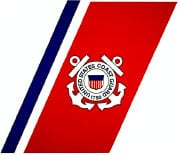 In the early ‘60s, America’s visual image had been neglected both inside as well as outside the United States. Since image building played an important role in the recent election of President John F. Kennedy, the industrial design firm of Raymond Loewy/William Snaith, Inc. was hired to redesign the exterior and interior of the presidential plane. Kennedy was so pleased with the new design that he approved their proposal for improving the world-wide visual identification of the U.S. Government.
In the early ‘60s, America’s visual image had been neglected both inside as well as outside the United States. Since image building played an important role in the recent election of President John F. Kennedy, the industrial design firm of Raymond Loewy/William Snaith, Inc. was hired to redesign the exterior and interior of the presidential plane. Kennedy was so pleased with the new design that he approved their proposal for improving the world-wide visual identification of the U.S. Government.
In 1964, the firm recommended that the Coast Guard adopt a symbol or mark that would be easily distinguished from other government agencies and easily applied to ships, boats, aircraft, stations, vehicles, signs and printed forms. Their design was a wide red bar to the right of a narrow blue bar, both canted at 64 degrees. Centered on the red bar was the Coast Guard emblem. Studies were done with experimental markings for their impact on the public, as well as their long-run compatibility with the Coast Guard’s mission and traditions. The reaction was overwhelmingly favorable. Three years later, on April 6, 1967, the now famous slash appeared throughout the Coast Guard.
In the history of U.S. Coast Guard aviation beginning with World War I, aircraft appeared in varying paint schemes and did not become uniform until after World War II. Until 1936, Navy colors were used, with the vertical red, white and blue stripes on the rudder. Contemporary Navy dark blue hull and yellow wing may be seen in illustrations of the Coast Guard OL-5, UO-4, RD, RD-1, RD-2, O-38-C, and PJ amphibians. In 1936, to provide a more distinctive color scheme, the airplane color was changed to aluminum, with yellow upper wing and tail surfaces and with red and white rudder stripes topped by a blue field. Some aircraft in service at that time were repainted. This color scheme is shown in illustrations of the OO-1, NT-2, RD-4, R3Q-1, TR-1, J2W-1.
When the Coast Guard was transferred to the Navy in 1941 for the duration of World War II, the yellow bands appeared on planes painted aluminum which were assigned to air-sea rescue. Navy colors were applied to all other aircraft. Gray and blue gray were commonly used and some aircraft even appeared in a species of camouflage.
In December 1952, the color schemes became basically aluminum with chrome yellow trim for high visibility. Helicopters were painted an over-all yellow color scheme, with varicolored tips on rotating aerodynamic surfaces. This was to enhance visibility to personnel working around helicopters on the ground, and helped track the main rotor blades. These schemes may be seen in illustrations of the PBY, PBM-5, Marlin P5M-1G, P5M-2G, and the HO3S-1G helicopter.
In 1958, Coast Guard aeronautical engineers began experimenting with a new easy-visibility paint scheme. Cornell University assisted in the research and suggestions were obtained from other interested observers. The idea was to paint aircraft conspicuously as a preventative to mid-air collisions, which was the concern of the whole aviation industry, military services, and a jittery public.
The most promising scheme was a fluorescent blaze orange outlined in black appearing on the nose of the plane, in a band around the fuselage behind the wings, and on the tail, on a basic field of solar heat reflecting white paint. These experimental paints proved many times more costly than the regularly used lacquers and enamels. They had to be stripped and replaced two or three times a year for maximum efficiency. Ultra-violet rays of the sun damaged the organic dyes so that the paints faded and lost power.
After further research easily strippable and more durable paints were developed and used on aircraft by 1960. . .The latest paint scheme that the Coast Guard began implementing in 1967 is basically similar to the former but incorporates the new diagonal Service identification blue bordered red stripe with the Coast Guard emblem superimposed on it. The aircraft is painted white.

